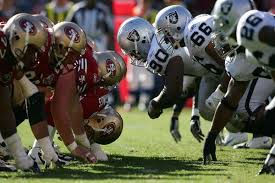Sherman Lewis
- David Hegler

- Apr 16
- 4 min read

Sometimes good players make even better coaches. Sherman Lewis starred as a running back and on the track at Michigan State, but his true calling was as a coach. His career has been decorated with players such as Roger Craig, Jerry Rice and Brett Favre, each of whom he has helped to find their greatest potential. This is his story.
The Early Years

Sherman Lewis was born in Louisville, Kentucky on January 29, 1942. After graduating from duPont Manual High School, Lewis accepted a scholarship to Michigan State University. In four years he lit up the gridiron with his fleet feet while dominating the competition in track and field.
As a sophomore, Sherman Lewis won the Big Ten indoor championship in the long jump and 300-yard dash. Asa junior in 1962, he was named second team All-big Ten and honorable mention All-American as a halfback. Later that year, he again won the Big Ten indoor long jump championship.
Senior year was a special one for Lewis. That fall of 1963, he rushed for 577 yard son 90 carries and led the team with 11 receptions for 303 yards. Not only was he named his team's MVP, but he also finished third in the Heisman Trophy race behind the winner Roger Staubach and Georgia Tech's Billy Lothridge while being named a consensus All-American. He capped off his college career with invitations to both the East-West College All Star Game as well as the Hula Bowl. As of 2001, he was fifth on the school's career rushing list and third in total touchdowns with 23 to his name.
Although he was picked in the ninth round by the New York Jets in the 1964 AFL Draft, he decided to try his luck in the CFL and signed with the Toronto Argonauts. After two lackluster years spent up north, he moved to the Big Apple in 1966. While there, he watched as fellow running backs Matt Snell, Bill Mathis and Emerson Boozer complimented quarterback Joe Namath's stellar passing attack. He didn't know it at the time, but Sherman Lewis had seen his future.
The Coach

When his playing days were over, Sherman Lewis returned to Lansing, Michigan to coach under his old mentor, Duffy Daugherty. For the next 14 years, Lewis saw his alma mater go through some major changes as Daugherty retired and was replaced with a long list of coaches: Denny Stolz, Darryl Rogers and Frank Waters. He learned a lot about the profession over those years but never tasted a lot of success as the Spartans never ranked higher than seventh in the nation.
Still, Bill Walsh liked him and hired Lewis to coach his running backs in 1983. He arrived in the Bay Area just in time too as the 49ers had recently drafted a spry running back out of Nebraska named Roger Craig. Walsh just knew that Craig had the tools to both run and catch with ease while making his West Coast Offense the deadliest in the league.
Sure enough, there was Craig putting on a clinic in Super bowl XXVIIII, catching two touchdowns and running for a third to set a Super Bowl record that still stands. Roger Craig followed that performance with a season-long spectacle the following year, becoming the first player in NFL history to both run and catch for 1,000 yards in the same season. The fact that he did all of this mostly as a fullback will never cease to boggle the mind.
Meanwhile, Sherman Lewis was busy coaching up all the running backs that came his way. Players such as Wendell Tyler, Joe Cribbs, Carl Monroe and lumbering fullback Tom Rathman each helped smooth the rough edges of the West Coast Offense, helping it hum along in a manner that Lewis hadn't seen since his days as a New York Jet.
After winning his second Super Bowl title in 1988, Lewis moved over to receiver coach in 1989, there he was tasked with challenging the greatest receiver of all time, Jerry Rice. Although the man had just set a Super Bowl record with 11 catches for 215 yards, he was willing to learn. That year, he led the league with 1,483 yards and 17 touchdowns as the 49ers again won the Super Bowl.

In 1992, Sherman Lewis left San Francisco with Niners offensive coordinator Mike Holmgren for Green Bay. As the Packers offensive coordinator, Lewis watched as Brett Favre matured from a wide-eyed young passer into one of the league's best, becoming the first to win three league MVP awards while leading the Packers to the 1996 Super Bowl.
After Sherman left Green Bay following 1999, he had stints with the Vikings (2000-2001), Lions (2003-2004) as an offensive coordinator and the Washington Redskins as an offensive consultant in 2009 before retiring from the profession. In 2023, he was given the Pro Football Hall of Fame's Award of Excellence to recognize his long coaching career.
References



Comments